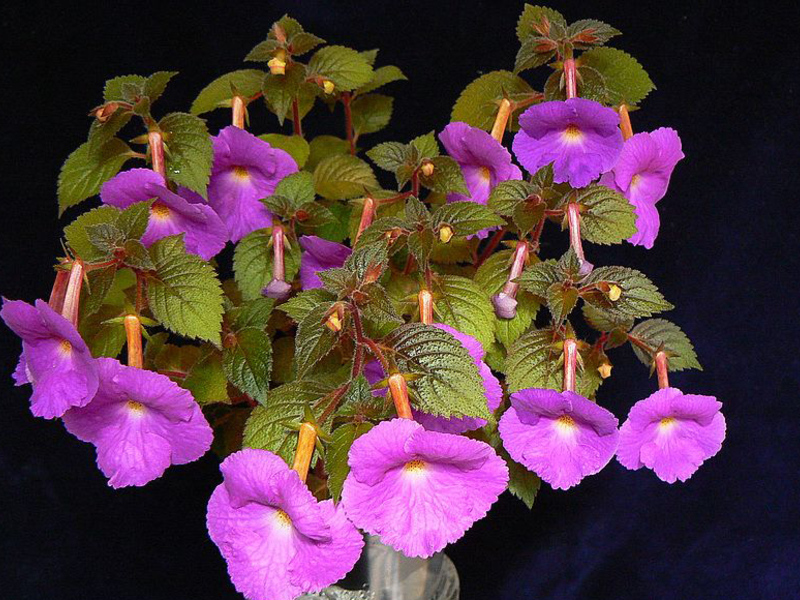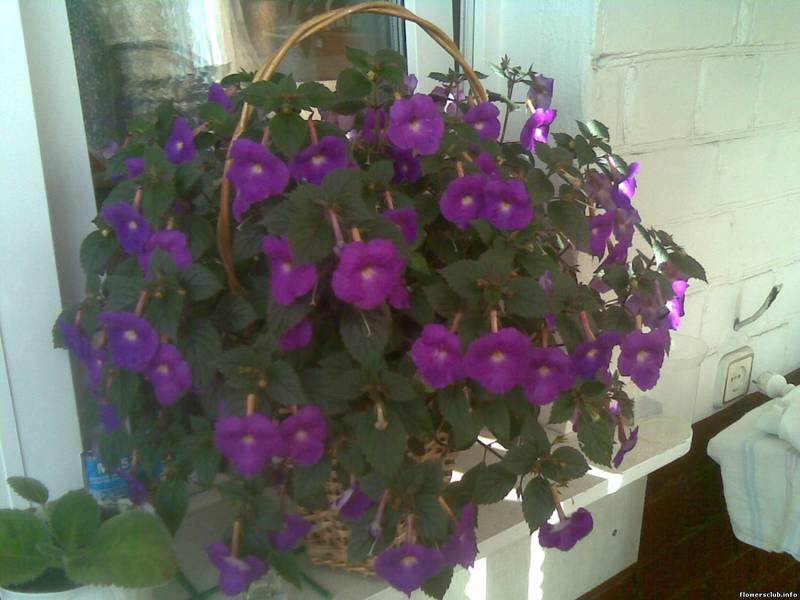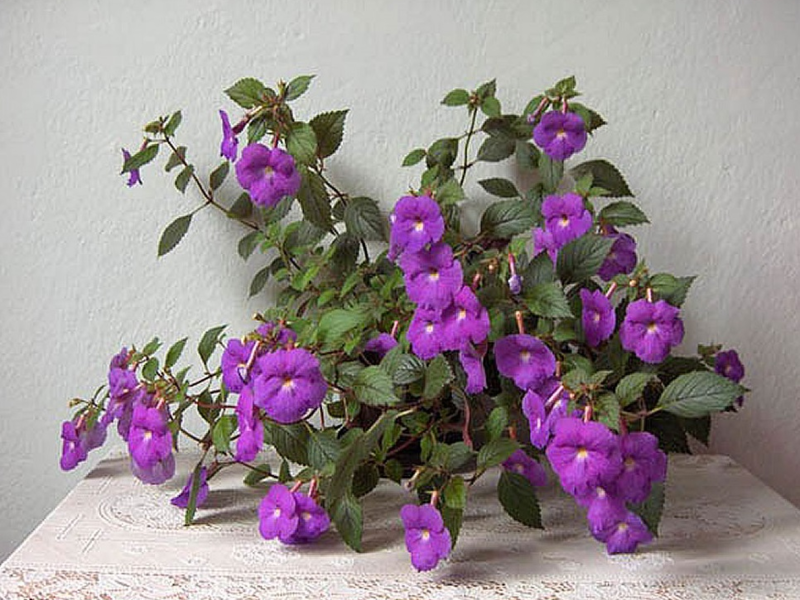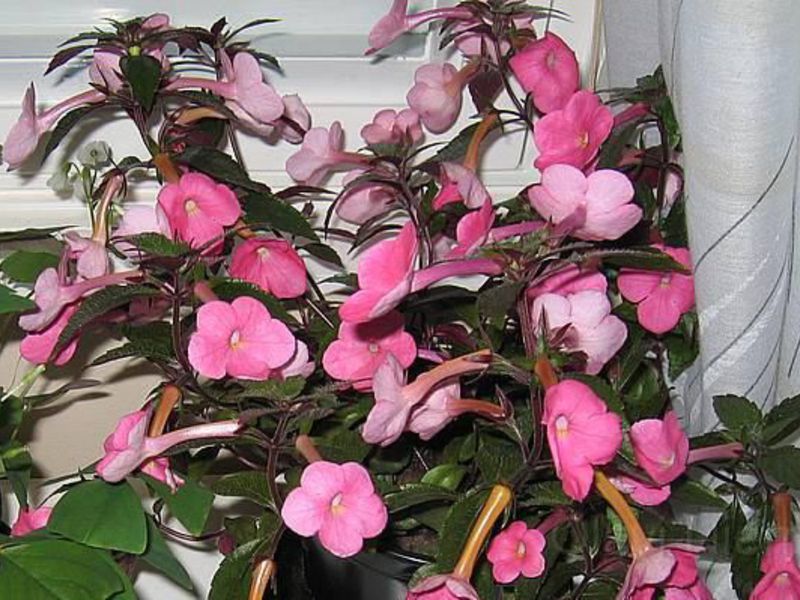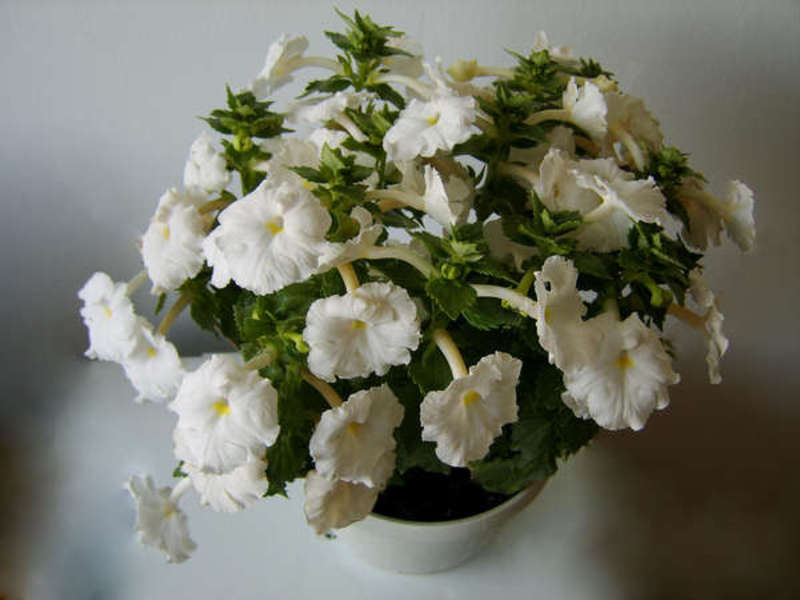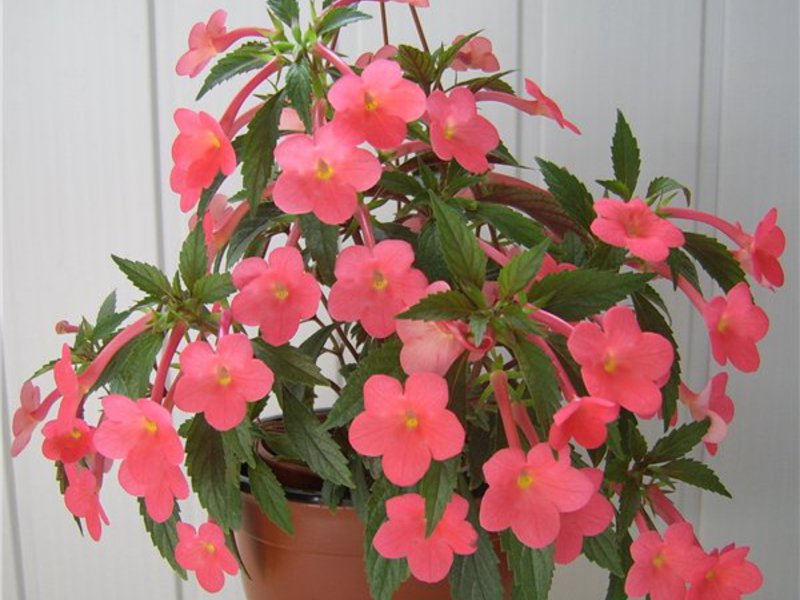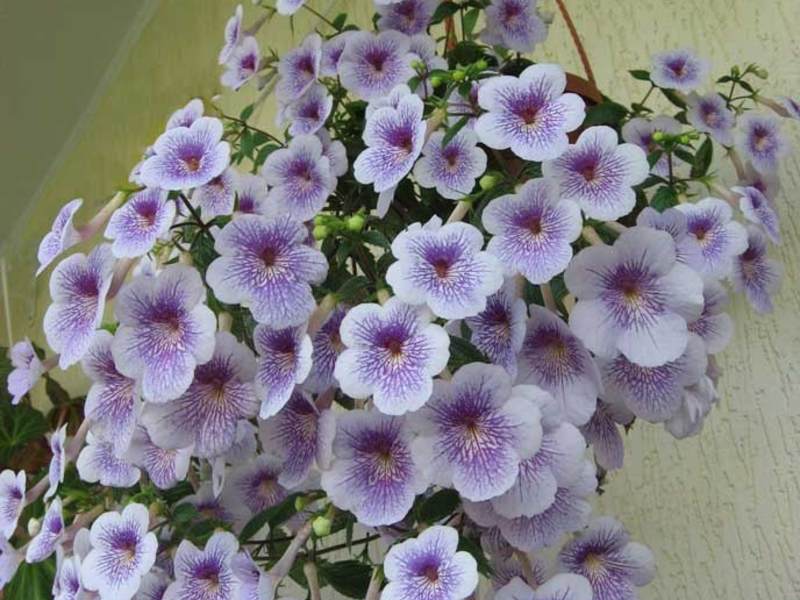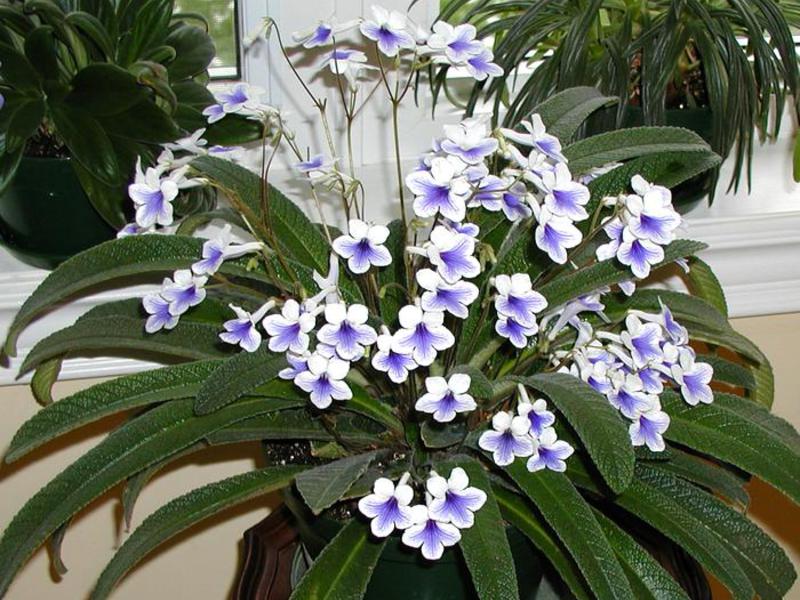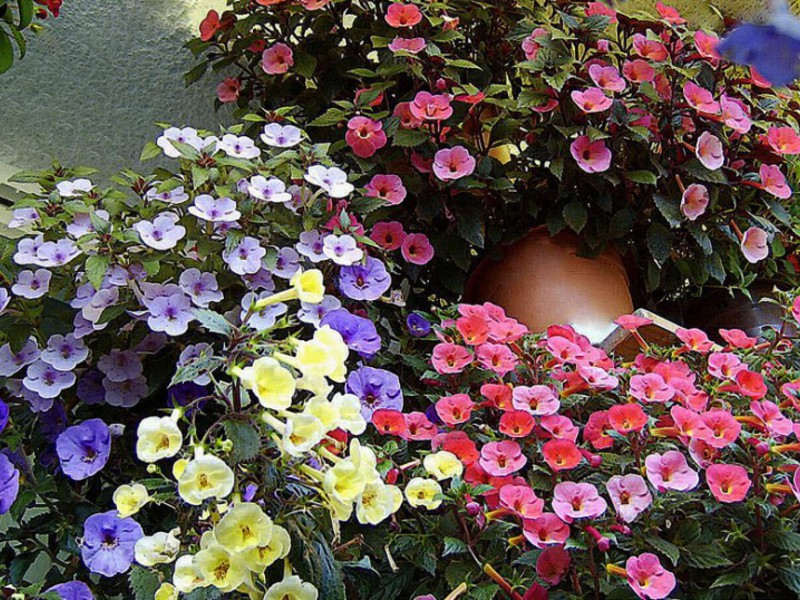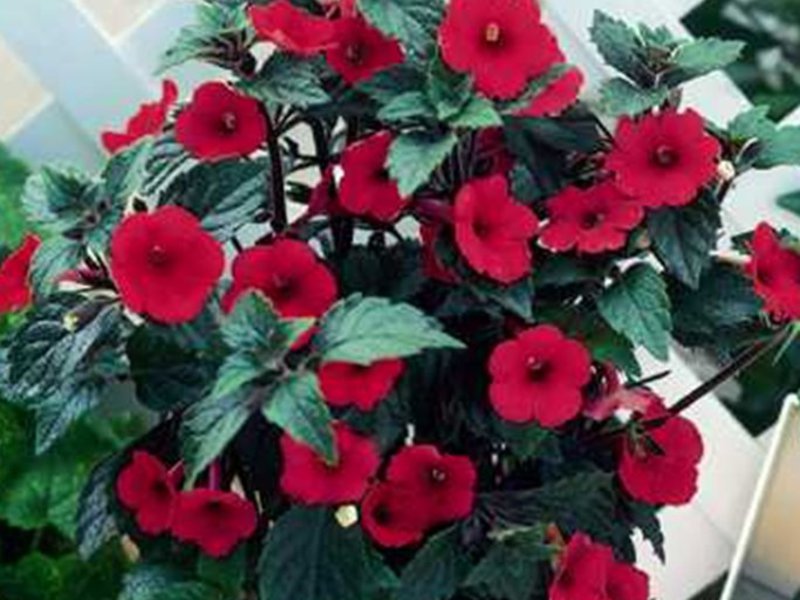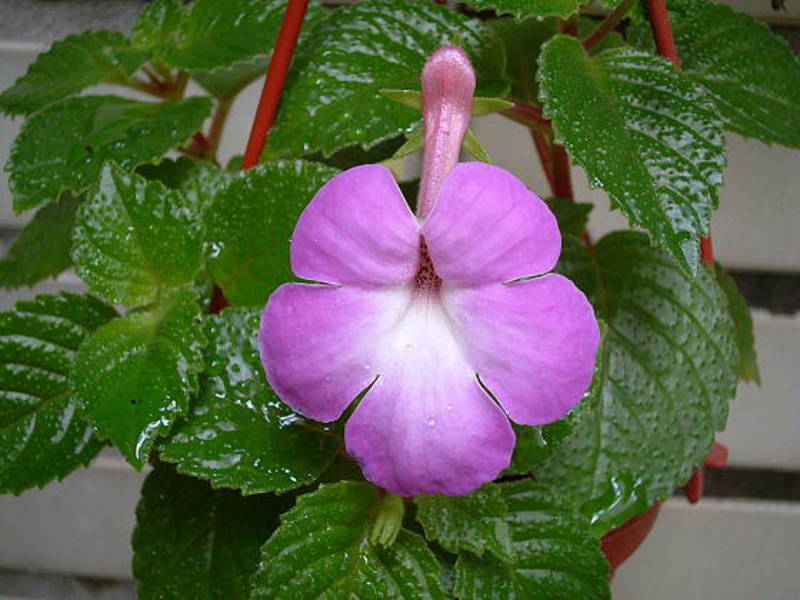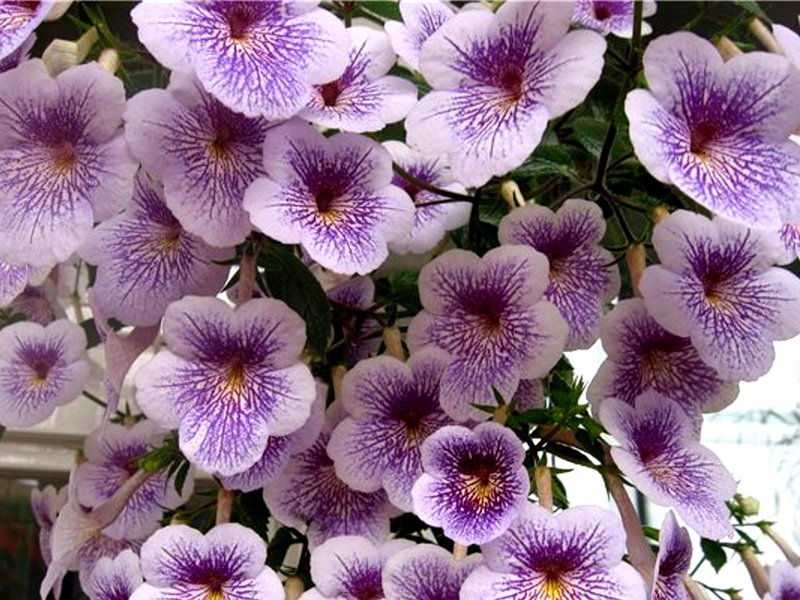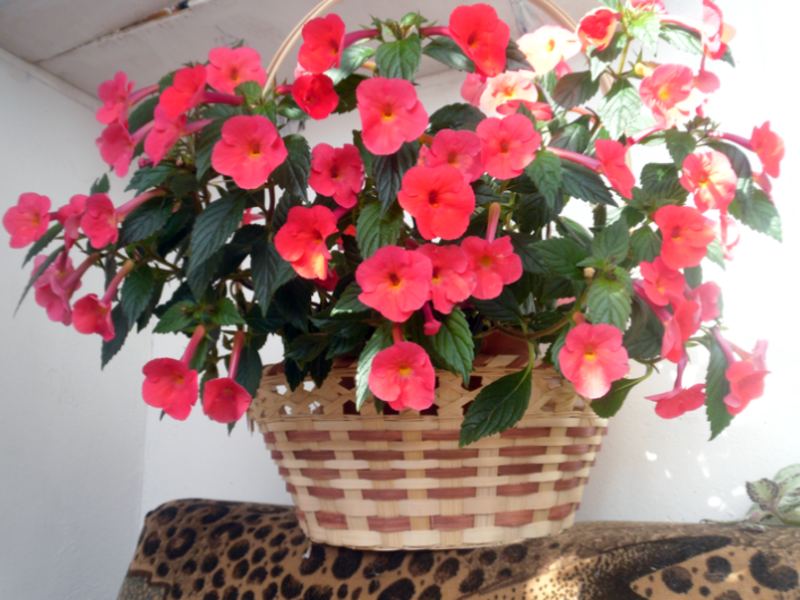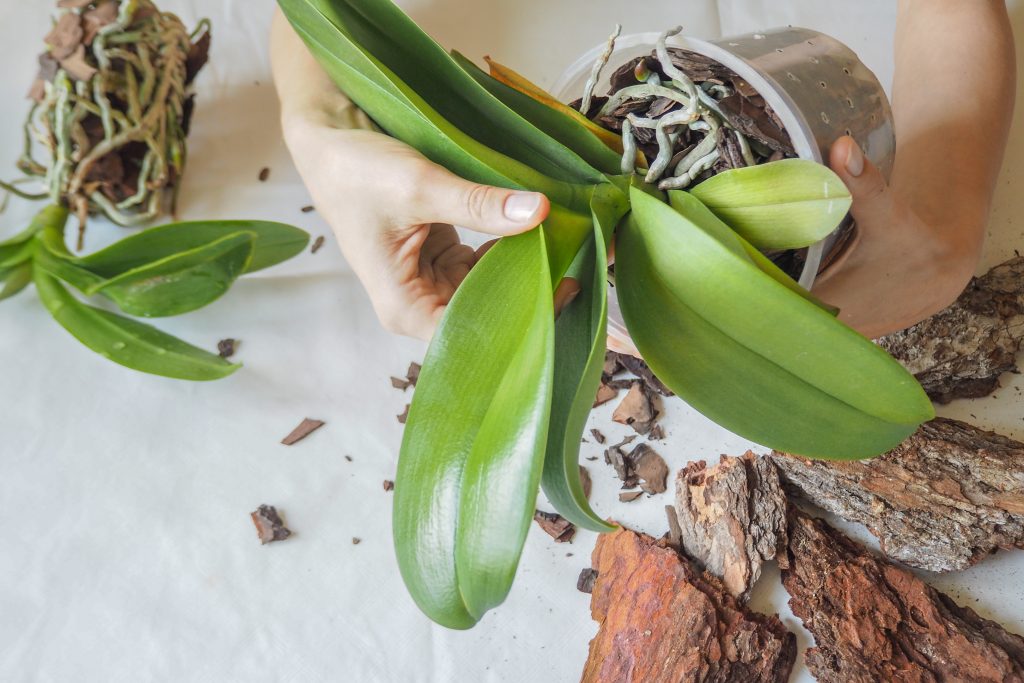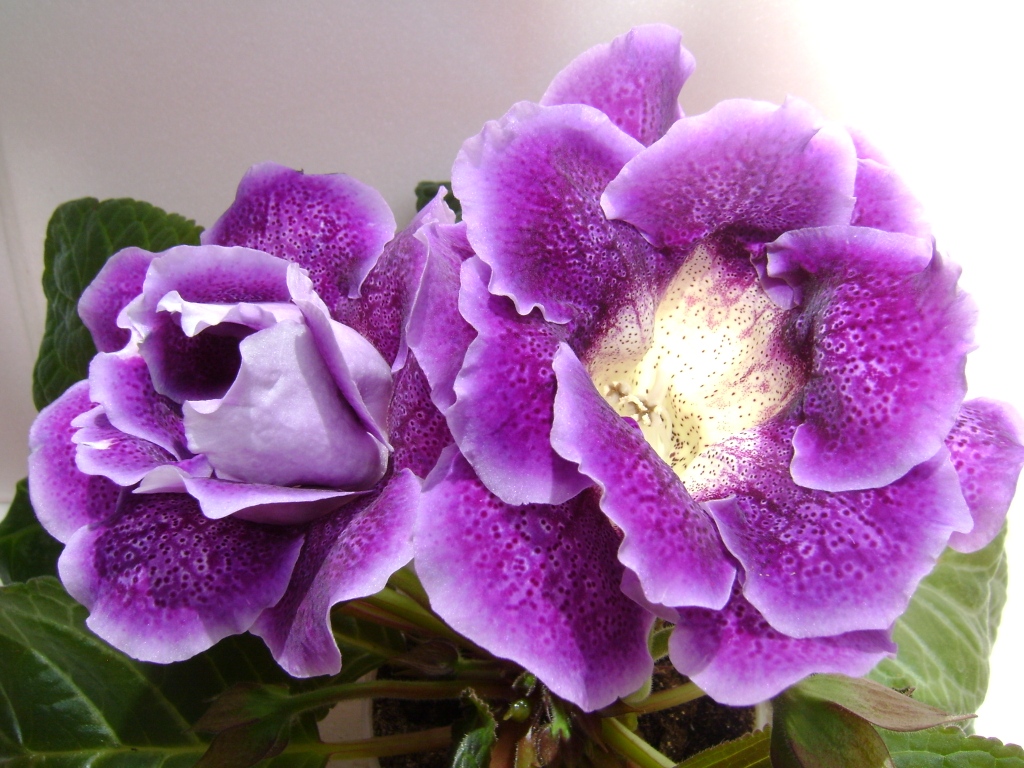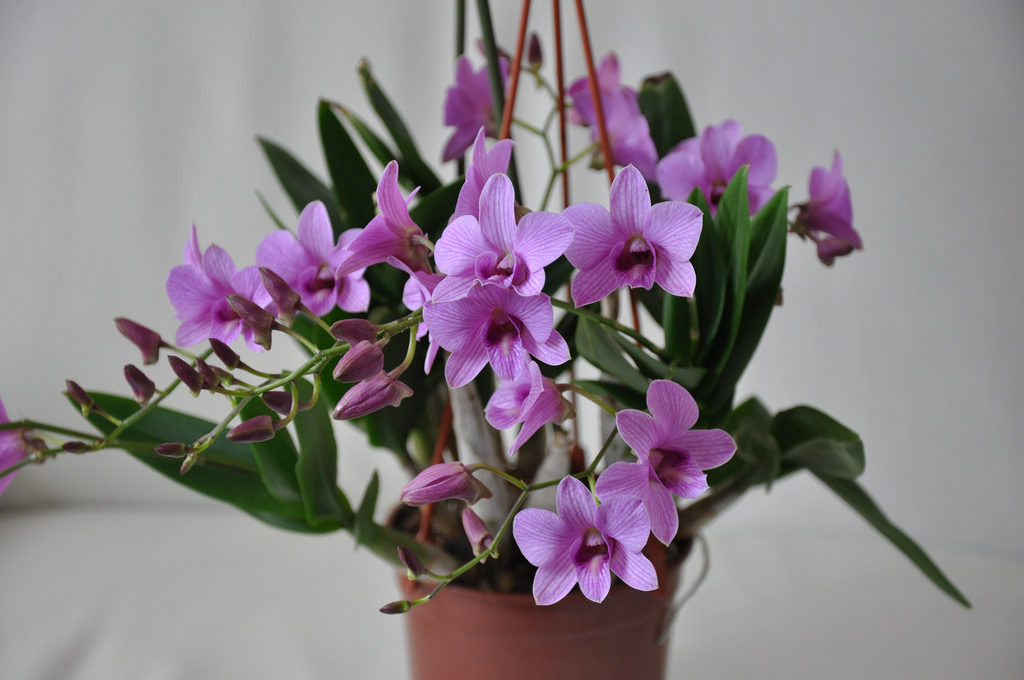Ahimenes is one of those rare ornamental plants that have received the attention of both experienced and novice florists. And for them it is interesting not only because of the varied color palette. This plant is able to delight with its flowering for more than one week, and also does not cause hassle in leaving.
In order to enjoy a continuous carpet of bright inflorescences, it can be grown at home in a variety of places - on a windowsill, a loggia and a terrace throughout the summer season. The type of achimenes is very popular. with long shoots, which is widely used as an ampelous plant.
In the fall, Ahimenes begins to fade, storing up strength to better endure the winter and again to please in the spring with bright flowering.
Content
Description and types
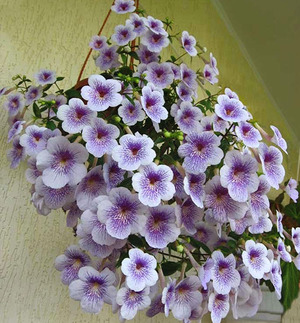 The homeland of this unfamiliar plant for most domestic flower growers is the tropical forests of South and Central America. He himself is a family of perennial Gesnerian shrubs. The genus of Achimenes is quite numerous and provides 30 types, among which you can find quite interesting bush and ampelous varieties that form beautiful compositions thanks to their hanging shoots.
The homeland of this unfamiliar plant for most domestic flower growers is the tropical forests of South and Central America. He himself is a family of perennial Gesnerian shrubs. The genus of Achimenes is quite numerous and provides 30 types, among which you can find quite interesting bush and ampelous varieties that form beautiful compositions thanks to their hanging shoots.
An attractive appearance to its straight or branching shoots with signs of pubescence is given by shiny leaves with a serrated border, which are additionally decorated with miniature stiff hairs.
Delicate flowers, which have a rare elongated shape, which resemble bells, also have decorative properties. They adorn the stems along their entire length, growing from the axils of the leaves. They look most beautiful during the flowering period, when they form thick bright hat of flowers, which makes the whole bush even more attractive.
Achimenes stands out from the rest of the common plants with a colorful palette of colors. Among the varieties are plants that are decorated with flowers of white, blue, purple, yellow, burgundy and other shades. Although the flowers do not last long and fall off rather quickly, they are quickly replaced by new buds, which make the achimenes bush equally attractive.
Although the genus Achimenes is quite numerous, among its representatives there are species that are most popular with florists:
- Achimenes longiflora (Achimenes longiflora). The main decoration of this species is its large purple flowers, reaching 6.5 cm in diameter. Within this group, the varieties "Chiapas", which form light purple flowers, and "Juaregia", which adorn white flowers that look even more attractive from - for the presence of a lilac speck in the center.
- Achimenes grandiflora (Achimenes grandiflora). What makes this species unique is that it has the most impressive size, unlike all other species. Its leaves look beautiful, in which the upper side has a dark green color, and the lower one is purple-red. Its decorative properties are just as pronounced in its carmine pink flowers.
- Fringed Achimenes (Achimenes fimbriata). During the flowering period, it grows white flowers, decorated with fringes around the edges.
- Achimenes hybrid (Achimenes hubridia). This species is quite numerous and provides many varieties with a varied color palette: "Yellow Beauty" - yellow, "Schneewitschen" - white, "Master Ingram" - red, "Purple King" - purple, "Rose Pink" and "Beauty" - pink, "Ambroise Verschaffelt" - white with thin purple veins.
The first flowers of achimenes open in early spring and continue to decorate the site until the end of autumn. Throughout the season, achimenes not only pleases the gardener with bright colors, but also accumulates nutrients in the rhizomes. His foresight makes it easy to take care of him in the winter, as he can feel good at this time of the year without lighting and maintenance. In winter, it can be kept in a secluded place under the bed, in a closet or garage, without showing any attention to it.
Site selection and lighting
Although achimenes is a light-loving plant, direct sunlight may not benefit him, but harm - this will affect his leaves, where burns may occur.
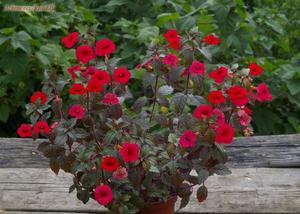 it is recommended to grow a plant on the western and eastern sides of the house;
it is recommended to grow a plant on the western and eastern sides of the house;- in conditions of active sunlight, it is necessary to create an artificial shade for achimenes, but it should not be complete. If it constantly grows in conditions of complete shade, then it will be impossible to obtain saturated flowers and provide conditions for normal growth of the stems;
- a prerequisite for the normal development of a plant is maintaining an optimal thermal regime: it feels best at a temperature of 20-24 degrees Celsius. In winter, you need to maintain the temperature within 10-15 degrees Celsius;
- during the cultivation of achimenes in room conditions, it must be borne in mind that drafts and sudden temperature fluctuations can greatly harm it.
Watering and air humidity
When the plant enters the active stage of growth and flowering, it needs ensure regular wateringusing warm water for them. Although achimenes needs moisture, care must be taken to ensure that it does not stagnate in the soil. As autumn approaches, watering should be reduced, and in winter it is enough to spend them no more than once a month.
Although it is difficult to obtain flowering plants without moisture, spraying as an additional measure is unacceptable, otherwise it will lead to the appearance of spots on the leaves. It is advisable to keep a pot with a flower on a pallet filled with wet expanded clay or pebbles.
Dormant period
 Usually the last flowers of achimenes wither by mid-autumn... After them, the rest of the plant is also preparing for the transition to a dormant state: the leaves begin to turn yellow and die off. At this time of the year, it is necessary to prune the dried stems of achimenes. Growing and leaving from this moment allows you to leave the roots in the old soil, or they can be transplanted into sand or sawdust.
Usually the last flowers of achimenes wither by mid-autumn... After them, the rest of the plant is also preparing for the transition to a dormant state: the leaves begin to turn yellow and die off. At this time of the year, it is necessary to prune the dried stems of achimenes. Growing and leaving from this moment allows you to leave the roots in the old soil, or they can be transplanted into sand or sawdust.
In winter, it is advisable to keep the roots in a place where sunlight does not penetrate, maintaining the temperature at 10-15 degrees Celsius.
However, even at this time of year need to control humidity, although the need for water will be much less: irrigation can be carried out once a month. At the end of February, the rhizomes can be returned to a light windowsill, after which they gradually begin to increase watering.
Soil selection and transplant of achimenes
Care and cultivation of this plant does not create a hassle for the grower. As a rule, achimenes can grow on any type of soil, but a prerequisite for its normal development is the availability of good drainage with a layer of 2-3 cm.You will not have to wait long for achimenes to bloom if you grow it in a pot filled with soil for flowering plants. It can also be replaced with self-prepared potting soil, which will require:
- sod land;
- leafy land;
- sand.
When preparing the mixture, a ratio of 2: 3: 1 is observed.
It is very important to choose the right container for the flower. It must be remembered that the bulk grows on the soil surface, and the root system is located in the surface layer. Therefore, it is recommended to grow achimenes in a wide and shallow pot.
The most favorable time for a transplant is when the rest period comes to an end. The rhizomes should be placed horizontally on the soil surface, and the soil should be poured on top with a layer of 0.5 cm. Then the plant should be covered with a transparent material that is not removed until the first shoots are formed.
Top dressing of achimenes
Flowers love fertile soil, so it is very effective to fertilize flowering plants. It is important to choose the right time for feeding, so do not immediately spend them in early spring. At this time, the necessary minimum of trace elements for the plant remains in the soil. At the first signs of active growth, fertilizer can be applied every two weeks.
Reproduction
To breed achimenes at home, you can use one of the following methods.
Seed propagation
 Sowing is usually planned in early spring, preparing a transparent greenhouse for them, in which the seeds are placed on the surface, leaving them without shelter. Keep the soil moist you can use spraying, in addition to which you need to air. If the plantings are provided with appropriate care, first of all, the optimal temperature conditions are 22-24 degrees, then the first shoots appear in about two weeks. The formation of the first two true leaves is a signal that it is time to pick the seedlings;
Sowing is usually planned in early spring, preparing a transparent greenhouse for them, in which the seeds are placed on the surface, leaving them without shelter. Keep the soil moist you can use spraying, in addition to which you need to air. If the plantings are provided with appropriate care, first of all, the optimal temperature conditions are 22-24 degrees, then the first shoots appear in about two weeks. The formation of the first two true leaves is a signal that it is time to pick the seedlings;
Propagation by cuttings
This method of breeding achimenes is not widely spread. Water or soil is used as a working medium for rooting, which is used to fill the greenhouse. The problem with breeding achimenes using this method is that by the dormant period the plant still weakened, therefore, the risk of his death in the winter is high;
Propagation by rhizomes
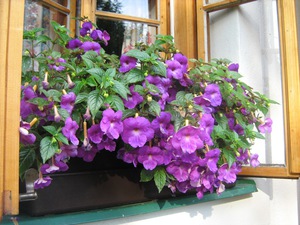 Experienced growers most often use this particular propagation method because of its high reliability. For a season, due to one rhizome, you can get up to a dozen new ones. When the root system grows well, they begin to divide it, after which the slices need to be given time to dry and treated with ash. After that, the prepared cuttings can be transplanted into pots. In order to protect the rhizome from decay, it is advisable to place it for a while before transplanting. in a weak solution of potassium permanganate.
Experienced growers most often use this particular propagation method because of its high reliability. For a season, due to one rhizome, you can get up to a dozen new ones. When the root system grows well, they begin to divide it, after which the slices need to be given time to dry and treated with ash. After that, the prepared cuttings can be transplanted into pots. In order to protect the rhizome from decay, it is advisable to place it for a while before transplanting. in a weak solution of potassium permanganate.
Conclusion
Ahimenez is one of the unpretentious plants, which is deservedly popular with many domestic flower growers. This plant perfectly takes root in our latitudes, therefore, flower lovers who do not have sufficient experience can grow it at home. The main attention should be paid to soil fertility and maintaining a moderate thermal regime. During watering, it must be borne in mind that an excess of moisture can harm the plant, so they need to be carried out in small quantities.
